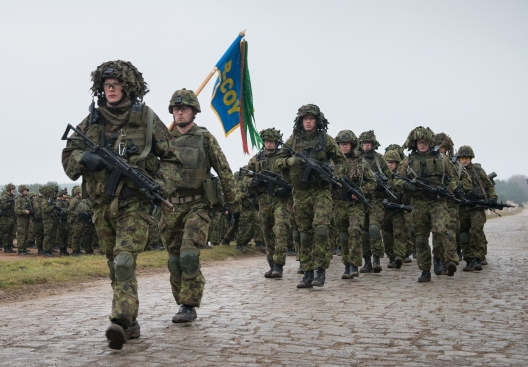 A leading analyst on NATO policy called for the alliance to place a permanent military presence in Baltic member states as a hedge against a more active Russian military.
A leading analyst on NATO policy called for the alliance to place a permanent military presence in Baltic member states as a hedge against a more active Russian military.
Speaking Tuesday at the Heritage Foundation in Washington, D.C., Jorge Benitez of the Atlantic Council said that so far NATO’s response in its exercise of military preparedness to Moscow’s threats against Estonia, Latvia and Lithuania, in particular, and other front line states, in general:
Lack speed in political decision-making and force deployment;
Lack size “so they’re not intimidating” to Russia and remain less costly to members;
And show weakness in readiness—from German air transport, to combat ratings of U.S. ground forces, to the availability of precision munitions.
Using the alliance’s Trident Juncture exercise last year as an example that involved about 30,000-40,000 NATO forces, “Russia sees over 80,000-100,000 deployed” in exercises calling for movement in 24 hours, marking a difference in scale and speed.
He called for a permanent military presence in the Baltic States to “show there are no second-class members” of NATO. That presence could be met with the establishment of the European equivalent of the National Training Center at Fort Irwin, Calif., with a permanent Opposing Force to train the alliance’s armored forces, as well as first-responding light forces, which would have to meet a conventional military crisis on the continent.
Benitez also said NATO should give back to the Supreme Allied Commander Europe (SACEUR) the flexibility to use “the crisis management power he had before,” that was used to train and use the Rapid Response Force in the wars that followed the break-up of Yugoslavia in the mid 1990s.
As for taking care of their own security needs, he suggested that the three Baltic countries contribute a battalion and Poland a brigade for a new rapid-response force under SACEUR’s authority.
Image: Estonian troops participating in Steadfast Jazz exercise, Nov. 3, 2013 (photo: NATO)
